The APRM, established in 2003, is Africa’s premier governance self-assessment and promotion tool. The purpose of the APRM is “to foster the adoption of policies, standards and practices that lead to political stability, high economic growth, sustainable development and accelerated sub-regional and continental economic integration through reinforcement of best practices, including identifying deficiencies and accessing the needs for capacity building,” according to its founding documents.
This project is being implemented by the South African Institute of International Affairs (SAIIA) in Johannesburg in partnership with Jasoro Consulting In Johannesburg.
South Africa joined the APRM in 2003 and underwent its first country review in 2007. This was subsequently followed by three progress reports.
The APRM’s rules require that civil society be meaningfully involved in each country’s review process. Together with government and the private sector, the country’s civil society will diagnose governance strengths and weaknesses and develop appropriate and applicable remedies.
However, South African youth have previously not been adequately involved in the APRM processes. In South Africa, young people between the ages of 18-34 years account for one-third of the population (17.48 million) which is very significant. This project therefore seeks to amplify the voices of South African youth who are grossly affected by prevailing governance deficits such as (but not limited to) corruption and state capture, youth unemployment, poverty and inequality, inadequate public participation, gender-based violence and climate change.
Potential benefits of the APRM in South Africa
The APRM can catalyse and bolster reform efforts, and open civic space for CSOs and citizens through the dialogue it promotes. It is also an opportunity for South Africa to showcase its best practices to its peers. A well-run, inclusive and transparent process can promote accountability in the country, and potentially attract investors and development assistance. This African-owned process will produce a comprehensive governance assessment of South Africa’s strengths and weaknesses and develop recommendations to remedy shortcomings, particularly as the country grapples with a global pandemic that will be felt for years.
The APRM also provides a platform to promote a wide range of governance issues that CSOs feel passionately about, through evidence-based submissions. It is a requirement that civil society be involved in a country’s APRM process. But the extent of their involvement is up to the CSOs, depending on how informed, interested and mobilised they are.
The process so far
- On 31 August 2020, the African Governance and Diplomacy Programme held an online pre-planning meeting to introduce the project and develop a roadmap. Download the presentations and meeting report:
- What is the African Peer Review Mechanism, and Why Does It Matter?
- Why Should the APRM Matter to Youth?
- On 22 September, a Sensitisation Workshop was held online. Download the presentations and meeting report:
- Introducing the South African APRM Popular Sensitisation Project
- The APRM Youth Agenda
- On 8 October 2020, a Civil Society Youth Working Meeting was held. Download the meeting report.
- On 24 February 2021, a Validation Workshop was held online:
- Download the meeting report
- Watch the South African APRM Popular Sensitisation Project webinar.
- Watch the Launch of the South Africa APRM Youth Submission webinar.
- A report of the Launch of the South African APRM Youth Submission held on 26 May 2021 via Zoom
Find out how similar projects have unfolded in Namibia and Botswana.
Watch a video about the process
View the infographics
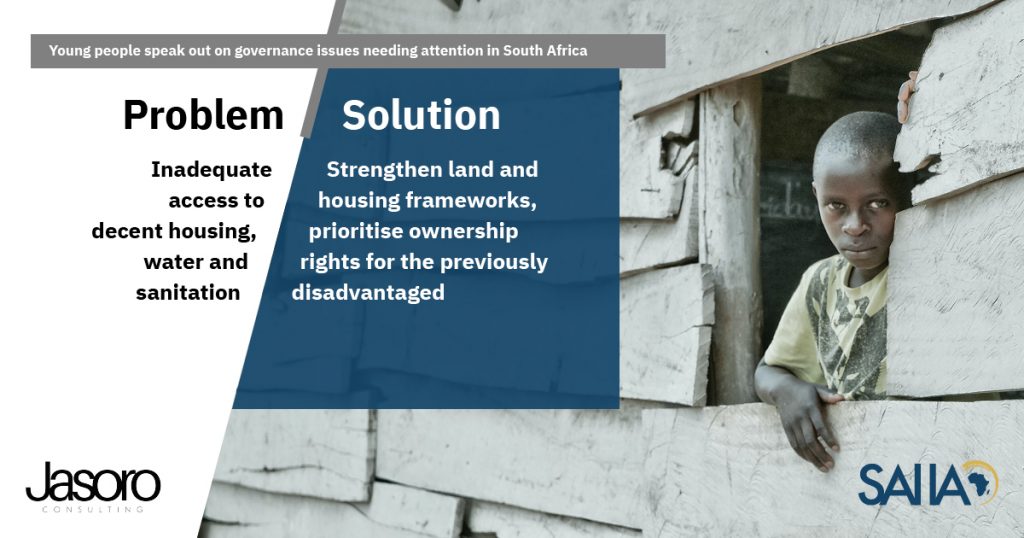
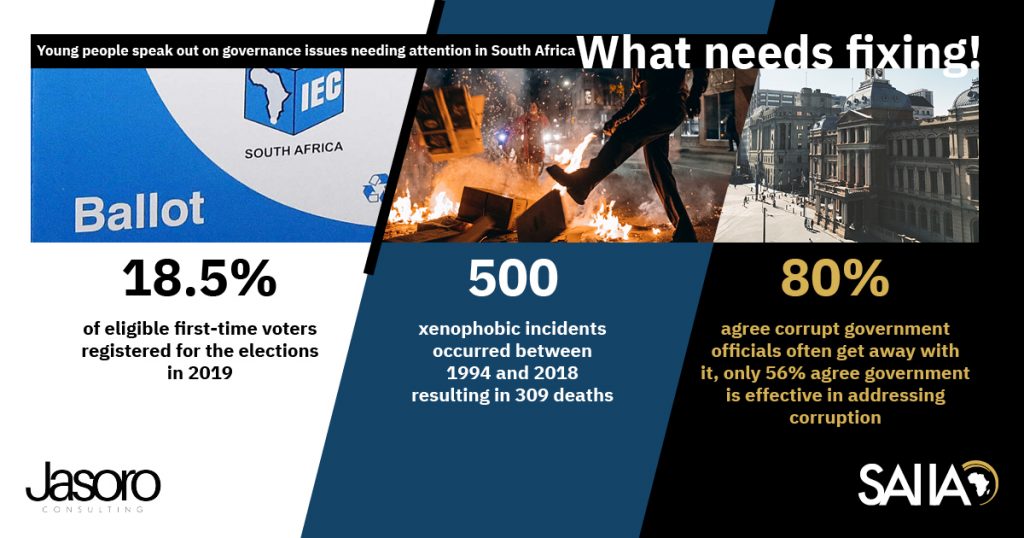
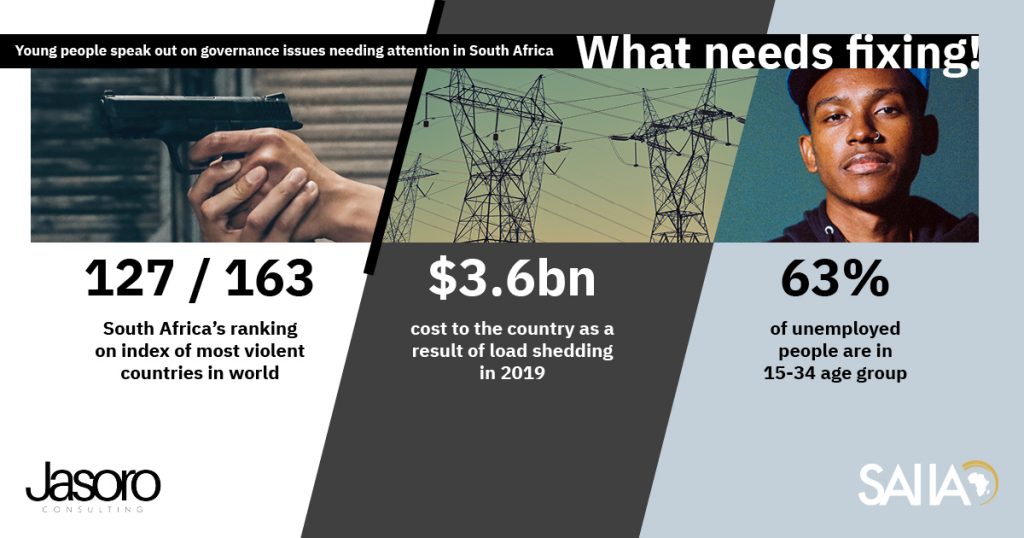
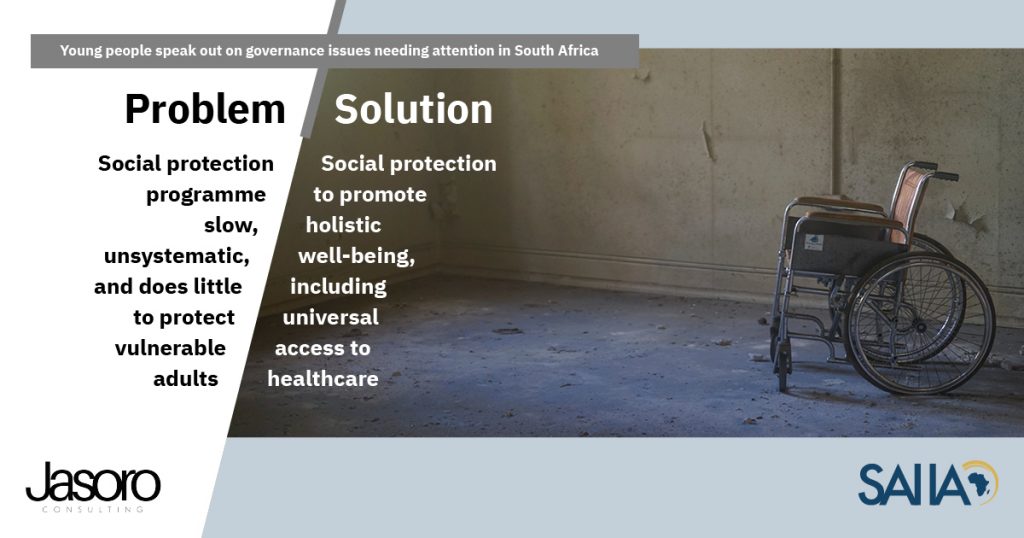
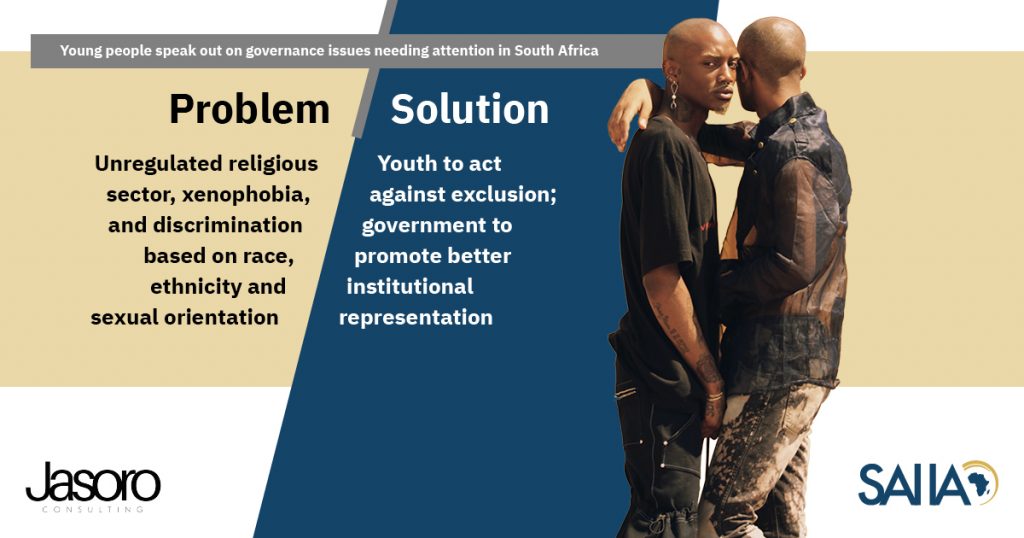

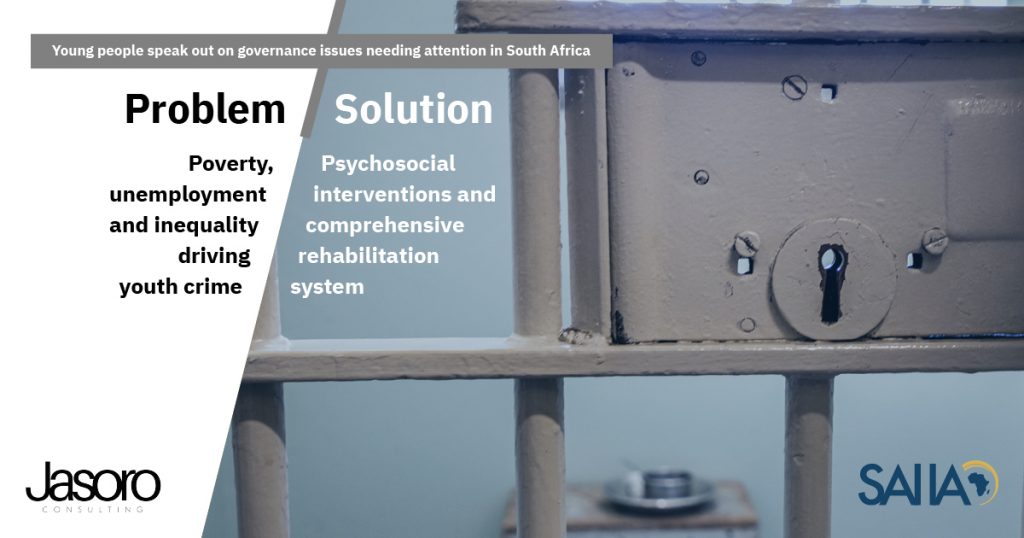

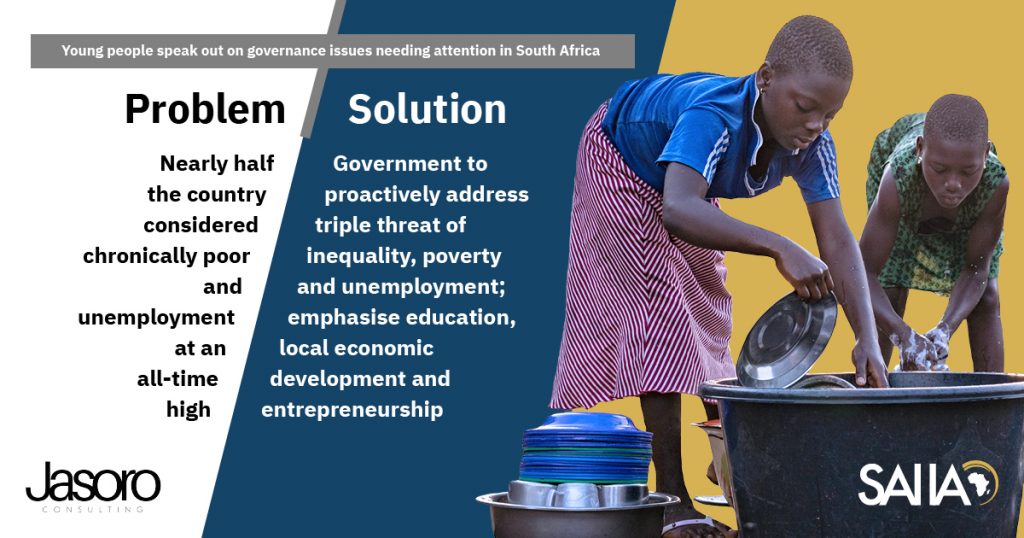
Useful links
- The South African Institute of International Affairs (SAIIA)
- The APRM Secretariat
- Jasoro Consulting
- The APRM Toolkit – an online repository of APRM official documents and academic analysis
- Mastering the APRM: Creating Your Submission
- Monitoring APRM Implementation: A Civil Society How-To-Guide
- Africa’s Diverging Approaches to Youth Inclusion and Participation
- South Africa’s first APRM Country Review Report (2007)
- South Africa’s Implementation of the APRM: Making A Difference or Going Through the Motions?
- APRM: Lessons from the Pioneers
- Additional Resources from South Africa’s APRM Process
- Handbook for African Civil Society (June 2008)
- Download the publication: Youth Perspectives on South Africa’s Governance Challenges
Download the report: Youth submission to the APRM in South Africa
See how a similar process unfolded in Botswana and Zimbabwe
The project partners would like to thank the Government of Sweden and the Swedish International Development Cooperation Agency (SIDA) for their generous support.




